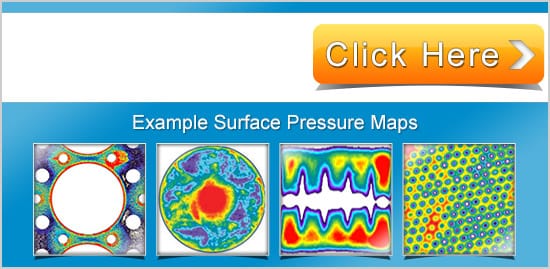Danielle Spector
Abstract
Ballet dancers often suffer orthopedic injuries in result of pressure placed on their feet while dancing en pointe. The structure of the pointe shoe was redesigned to add support to key areas in the toes. Pressure was distributed among all toes using a design that molded to the foot. Different materials were tested for their ability to distribute pressure. Trials were conducted by placing a controlled weight (444.82 N) on a model foot and measuring the resultant pressure via pressure indicating film. Results indicated that the spray foam reduced pressure the most. Pressure was not distributed to only 11.93% of the toes. At 24.0%, the rigid plastic was the least effective.
Introduction
Ballet dancers have strived to perfect their art in technique, style, and their most important tool: the pointe shoe. Pointe shoes are what dancers wear to reach new heights both literally and metaphorically. One will typically begin pointe work after numerous years of dance. At this time, with her teacher�s approval, a girl may begin pointe work. Unlike a regular ballet slipper, a pointe shoe covers the toes like a hard shell. It comprises a toe box, which encompasses the tip of the foot, a shank, which supports the arch of the foot, and the satin that holds the shoe together. Along with the shoe itself, the dancer must also have some type of padding for comfort. The shoe should mold to the dancer�s foot so that when the dancer is standing normally her toe touches the platform, or the flat surface at the tip of the shoe. To accomplish this, one may make adjustments to the shoe such as using alcohol, tools, or hands to bend and soften it. The ability of a dancer en pointe is dependent upon a combination of anatomy, physics, and shoe structure.
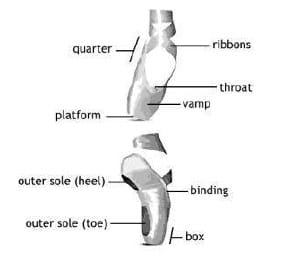

Figure 1. The parts of a pointe shoe. The toe box is indicated and the hard shank lies along the arch.
For additional support ribbons are attached (Parts of the pointe shoe, n.d.).
Literature Review
Pointe Shoe Structure
The toe box of a pointe shoe is normally constructed with some combination of burlap, cardboard, or paper, while the shank consists of layers of cardboard or leather. The glue that holds it together usually has its bonds broken in the breaking in process, which a dancer struggles to finish when first buying a new pair of shoes. However, breaking in the shoe is necessary in giving it flexibility and fitting it to the foot (Cunningham et al., 1998, para. 3).
Health Risks
Injuries that affect dancers occur in result of the extreme pressure that dancers place on their toes while en pointe. Some common injuries found in pointe dancers are bunions, Achilles tendonitis, hammer toes, stress fractures, metatarsalgia, and sesamoiditis. A bunion will gradually form in response to a dancer�s habit to roll her feet inwards. When this occurs, the large toe will begin to point toward the second toe to form a bump on the inside of the foot. To inhibit progression, a dancer may improve technique to avoid further damage, perform stretching and strengthening exercises, or use spacers between the first and second toes (Jessica Viscomi, personal communication).
Plantar fasciitis is an injury that is onset by stress and constant exercise. The plantar fascia is the long strip of tissue along the bottom of the foot. Depending on the structure of the foot, it will often become inflamed, or it may tear. When this happens the dancer will experience pain in her heel usually after exercise or intensive use (“Common Dance Injuries,” n.d., para. 5). In a study to determine the most accurate method of measuring the arch of the foot, researchers stated that people with higher arches were more prone to injury, than people with low arches (Williams, 2000, 864).
Sesamoiditis involves the sesamoid bones, which can be found under the foot, located near the big toe. Inflammation of the tendons connecting the sesamoid bones can result in pain when flexing the toes. Rest is most beneficial in relieving pain; however, using a j-shaped pad along the area or taping the toe downwards can also ease soreness (“Common Dance Injuries,” n.d., para. 2). Last is metatarsalgia, which results from flexibility and looseness in the ball of the foot. Treatment includes strengthening exercises, protective padding, and rest (“Common Dance Injuries”, n.d., para. 6).
Shoe Fitting
Fitting a pointe shoe can be very difficult because each foot is different. Shoe sellers classify feet by shape, toe length, and arch. According to this system, there are three main types of feet: Greek Morton�s Foot, Egyptian Foot, and Giselle/Peasant Foot.
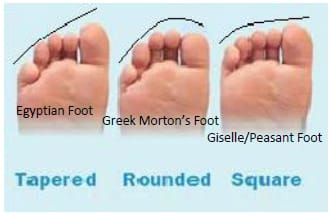

Figure 2. This displays the different foot shapes. It compares toe length with foot width.
A Greek Morton�s Foot requires a narrow or medium shoe width and is characterized by the second toe, rather than the first, being the longest. This same shoe type is necessary for the Egyptian Foot, which typically has a very long big toe and increasingly shorter small toes. A medium or wide shoe is used for the Giselle Foot which is characterized by very short toes of similar sizes. The Greek Morton�s Foot and the Egyptian Foot can occasionally have a weak metatarsal area which makes the foot compress under weight (De Vor, 2002, p. 11). Arch type is essential in choosing a pointe shoe with the right shank. Dancers with low arches generally have trouble fully standing en pointe. To accomplish this, the dancers must have a weaker shank that allows them to bend their foot. As the arch increases in height, a stronger shank becomes useable (De Vor, 2002, p. 11). In a pointe shoe, the toe box must correlate with the length of the toes. Dancers with longer toes require a tapered toe box; in contrast, dancers with shorter toes require a straighter square shaped toe box. To measure a customer�s foot, a fitter may use a Brannock device. It is useful in measuring both the height and the width of a foot. The shoe must fit so that it completely molds to the foot. The big toe should touch the tip of the box, and the satin should be taught when the dancer is standing with her heels together in first position (De Vor, 2002, 13).
Physics of Ballet
Because the platform of the pointe shoe has less surface area, it is very difficult for a dancer to maintain her center of gravity. Displacement of gravity increases when the dancer is standing on one foot. To maintain balance, weight must be carried in the opposite direction (Laws & Harvey,
1994, p. 16). As the toe lengthens to the ground, tension in the dancer�s Achilles tendon supports and balances the dancer. The Achilles tendon is essential to a dancer�s career because it must support pressure three times the dancer�s weight (Missaghi, n.d., para. 3). The dancer�s center of gravity must be directly over the toe of the pointe shoe because balance is only possible when net force on the body is zero (Missaghi, n.d., para. 1).
Pressure
Much of the research in pressure distribution is being done currently in the design of wheelchairs and work chairs. Researchers have found that this relies upon the upright posture verses the reclined posture of the subject. Discomfort and soreness is experienced by the sitter because of the constricted blood flow due to the sitter�s position (“The art and science of pressure distribution”, 2009, 2).
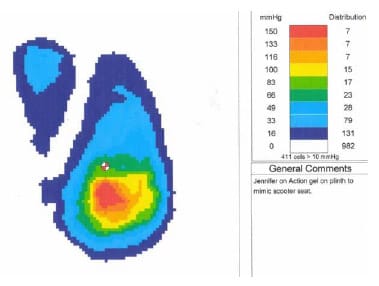

Figure 3. Pressure distribution map of a wheelchair. This graph show the pressure exerted
by a subject sitting on a wheelchair. It has been measured using a thin, flexible
pad and can be read using a computer (Pressure Sores, 2003).
Pressure maps like the one above are very useful; however, they are not representative of all body types. Researchers are developing new seats that will fit to the contours and curves of the body (“The art and science of pressure distribution”, 2009, 3).
Measurements and Data Collection
Data involving pressure of certain objects can be collected using pressure indicating sensor film. This film is coated with a thin layer of microcapsules that, upon impact, will burst. A representation of pressure and its intensity will appear. The results can be compared with a color intensity legend that will give the approximate Pa value (Pressurex® Tactile Pressure Indicating Film, 2009, para. 1).
Research Plan
The problem that will be addressed in the engineering project is the lack of safety, durability, and balance in pointe shoes. Dancers are faced with the task of standing in shoes that are not supportive and lead to major foot damage that affects them throughout their lives.
Pointe shoes are detrimental to the health of dancers� bodies and feet, causing stress fractures, bunions, and pain. A new pointe shoe that is capable of relieving pain and able to fully sustain the foot while on pointe will be engineered. New materials including rigid plastic, gel, memory foam, and other foams will be investigated for properties that decrease pressure in the big toe and increases support in the smaller toes.
To find the most suitable material for the support at the platform of the shoe, an assortment of material, such as spray foam, memory foam, and rigid plastics will be collected to test for pressure. Experiments will be conducted using pressure indicating paper. After analyzing this data, a material or combination of material will be chosen to then build the shoe. Another possibility in constructing the shoe could be to combine components used in orthopedic shoes with the pointe shoe. After building the shoe, the prototype will be tested by the investigator. If error occurs, corrections and improvements can be made to the prototype. When testing materials, set amounts of pressure will be applied to each for a fixed duration of time. Experiments may also be performed to measure the material for water resistance because sweat increases fatigue rate. One method of measuring the effects of the pointe shoe on a dancer�s foot would be to evaluate pressure while the shoe is being used to assess pressure in central areas of the foot where injuries most often occur. This can be achieved by using pressure sensitive paper. The design criteria for the pointe shoe include support, comfort, fatigue, structure, water resistance, and foot protection. To measure the data, a bar graph will be used. Each material will be placed on the x axis to analyze the overall capability of the material. The Student T Test gives a sufficient number of trials to provide reliable and accurate data in experimenting with the efficiency of each material before the pointe shoe is made.
Methodology
The inside of a Capezio pointe shoe (Glisse Capezio size 7.5) toe box was lined with Reynolds Wrap aluminum foil. The toes of the Diane Practice foot were also covered with aluminum foil. One strapped mouth guard (EZ Gard) was placed into a pot (Precision II, 3-Ply Stainless Steel, 14 cm diameter) over a stove (GENN-Air Company, Model #S136-01-010448DF) at high temperature. The mouth guard was removed with standard tongs from the water after approximately 30 seconds and placed onto a large piece of aluminum foil. The melted plastic was molded into a 2.5 by 6 cm rectangle using the tongs. Once again, the plastic was placed into the boiling water for approximately 30 seconds. It was removed from the water with tongs and placed carefully into the into the pointe shoe at the platform. The toe portion of the model foot was then placed into the pointe shoe. The foot was then pushed into the shoe with a constant force for approximately ten seconds. This was repeated multiple times until the plastic was completely molded to the foot and the shoe.
Great Stuff Insulating Foam Sealant (Dow) was sprayed into the bottom of the shoe. The toe portion of the model foot was pushed into the toe box with force and then removed. The shoe with the foam was left to rest for approximately 8 hours until hardened.
Dimensions of the toe box were measured for placement of the Tempurpedic memory foam sample. The foam was cut with standard 21 cm scissors.
Sensor Products Inc. tactile pressure indicating film was cut into a 2 by 4 cm rectangle. The strip was then placed with the dorsal side facing the inside at the platform of the shoe and was fastened in place with tape. The model foot was placed inside the shoe with the elastic firmly wrapped around the upper foot. The foot was lifted into relev� and a repeated weight of 45.359 N was placed on the shoe 5 times, each lasting 1 second. The foot was removed from the shoe carefully without putting any extra pressure on the film. The film was removed and examined. This process was then repeated with a new strip of pressure indicating film for each prototype made previously.
Pressure paper was examined over graph paper (.3 cm²) and empty squares or squares with pressure density under .1 were counted. These were then divided by the total squares taken up by the pressure paper to return the percent of space without significant pressure.
Results, Data Analysis, and Discussion
Results indicate that the spray foam material had the best abilities in distributing weight. Percent of empty space or space of a density under .1 on the pressure paper reading was calculated. This indicated how well pressure was distributed throughout all areas of the toes. The table below shows the different percentages of each trial and the average percent.


Table 1. Comparative pressure ratings of shoe insert materials.
The spray foam had the lowest average percent of 11.93%, which shows that it was the best in relieving pressure. The next lowest percent was that of the soft foam. Pressure was not distributed to 14.79% of the toes. The third, which was the least effective in the purpose of distributing pressure, was the rigid plastic, which did not distribute pressure to 24.00%.
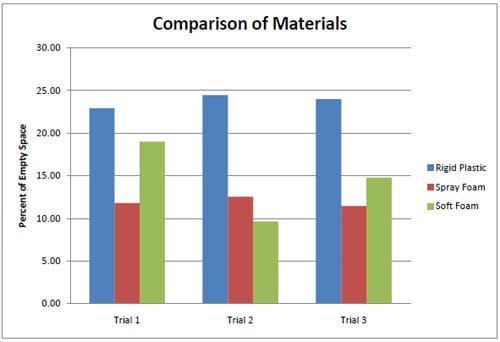

Figure 4. Comparison of the percent of toe area where weight was not distributed. Each prototype was testing with pressure indicating film 3 times.
In the graph above, it is evident that the spray foam was the most effective in each of the trials. In each of the trials the percent of the soft foam tends to fluctuate. This is also apparent in the standard deviation labeled on the graph. For the soft foam there was deviation of 4.68%, which was higher than the .79% and the .55% of the rigid plastic and the spray foam. Therefore, the results of the soft foam may not be as firmly established as the others. This may have been due to defective pressure paper or the model foot being improperly placed, which may have skewed data.
Conclusions
Results indicated that the spray foam was the best material. After trials, the product was used by the tester and it was determined that there was improvement in the support and comfort. There was a trend; however, more trials would have better supported any conclusions made. Although the spray foam prototype reduced pressure the most, it was apparent that it did not actually eliminate it. There were also other factors to weight. The rigid plastic, which was molded from a melted mouth guard, was difficult to shape perfectly to the shoe and the foot. The spray foam was a little less difficult, but it took eight hours to set. The foam was easiest to fit because it only included cutting and sizing. These must all be considered when thinking of the dancers who would use the product. With these aspects considered, it can be confirmed that the spray foam insert was the most effective design.
Limitations and Assumptions
The experiment proceeded with the following assumptions in place. The weight applied to the model foot while inside the pointe shoe corresponded to the weight of an actual ballet dancer. Although testing was not authentic, the model foot produced a controlled shape for each trial. An additional assumption was that both the shoe and the foot represent all foot types or the general foot type. The brand and range of pressure indicating film was maintained throughout the experiment. The shoe being tested was also the same in each trial, which may have produced error due to fatigue or loss of structure. All prototypes were cost effective, each under ten dollars in material.
Applications and Future Experiments
Design can be applied to all pointe shoes and can be reformed for different foot types. This is not only helpful for ballet dancers but can be applied to insteps regular shoes. This can also lead to more personalized sales of pointe shoes that will allow for better support in all pointe shoes. In future testing, pressure can be measured for different foot types. This would give a better understanding of which prototype would reduce pressure the most many different conditions. Another possible way to decrease pressure would be to better distribute it to the arch of the foot. One of the earliest ideas was to distribute using beams. Another possible test would be to determine the health problems that occur with pointe. This could give a better understanding of how best to improve the shoes.
Literature Cited
- Common dance injuries: the foot and ankle. (n.d.). Retrieved September 23, 2009, from https://www.med.nyu.edu/hjd/harkness/patients/injuries/foot.html.
- Cunningham, B.W., DiStefano, A.F., Kirjanov, N.A., Levine, S.E., & Schon, L.C. (1998). A Comparative Mechanical Analysis of the Pointe Shoe Toe Box: An In Vitro Study. The Amercan Journal of Sports Medicine, 26(4), 556-561.
- De Vor, D. (2002, August). Having a fit. Ballet Alert!, 11-13.
- Laws, K., & Harvey, C. (1994). Physics, dance, and the pas de deux. New York: Schirmer Books.
- Missaghi, M. (n.d.). The physics of toe shoes. Retrieved September 23, 2009 from https://www.the-perfect-pointe.com/PointeShoePhysics.html.
- Parts of the pointe shoe. [Web]. Retrieved from https://32fouettes.com/generaldanceinfo.aspx
- Pressure sores. (2003). [Web]. Retrieved from https://wheelchair.ca/pressuresores.php
- Pressurex® tactile pressure indicating film. (2009). Pressurex®. Retrieved from https://pressuresensitivefilm.net/home.php .
- The Art and science of pressure distribution. (2009). Herman Miller, Retrieved from www.hermanmiller.com/MarketFacingTech/…/se_Pressure_Distribution.pdf.
- Types of feet. (2009). [Web]. Retrieved from www.tingballet.com/?tag=pointe-shoes.
- Making Freed Classic Pointe Shoes. (2002). Retrieved September 23, 2009, from https://www.pointeshoe.com/making.htm.
- Williams, Dorsey S., & McClay, Irene S. (2000). Measurements used to characterize the foot and the medial longitudinal arch: reliability and validity. Physical Therapy, 80(9), Retrieved from https://find.galegroup.com/ doi: A65571169.
Acknowledgments
The author wishes to thank several mentors and family member who provided continuous support throughout the process and guidance for the design and testing of the product. Mr. David Ludt, as an advisor, gave support, guidance, and motivation, and helped in the development of the engineering goal. Mr. William Ellis provided extensive knowledge of setting up controlled experiments. Dr. Holly Keyes Ault, from WPI, also gave advice the mechanical engineering components of the project. Her parents and uncle also helped in the developing the idea, scheduling, purchasing supplies. Finally, her brother�s effort in lifting weights to place on the shoe was also greatly appreciated.



